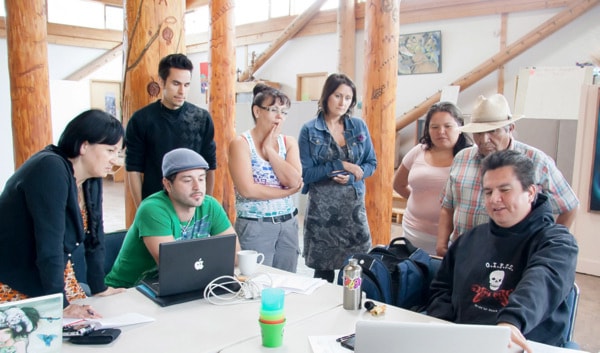There are some that say the world is going to come to an end next year, based on Mayan prophecies and, well, Hollywood Armageddon style movies.
There are many different kinds of prophecies though, and that is where the latest collaborative reject form the Ullus Collective comes in.
Thanks to a $28,000 grant and inspired by the growing hype surrounding end-of-the-world prophesies, the group of indigenous artists has been able to begin work on the Picto Prophesy project, looking to bring some perspective to the hype through a creative examination of prophesy, grounded in their cultural experience combined with the use of modern technologies and context, research and discourse.
“Our proposal is to create land-interpreted new media works, sharing discourse about Indigenous dream culture, visions and prophecies,” said Ullus chair Tracey Bonneau. The group of artists involved in this project, which includes Bracken H’anuse Corlett, Warren Hooley, Victoria Baptiste, Chris Bose, Mariel Belanger and Richard Armstrong along with Bonneau and senior artist Cease Wyss, have already met twice in “artist creation circles” to share ideas about the project as well as their knowledge and understanding of concepts practiced by indigenous cultures.
“What I wanted to build was a temporary shelter. My original idea was that it would be a tent structure. I haven’t decided whether it would have sound or video or both,” said Corlett, explaining one of his early ideas.
Ullus was awarded the grant after their proposal made it through what Bonneau calls a highly competitive national media arts competition.
The proposal itself, she explained, wraps around the creation of location-based artworks using GPS technology to integrate audio, video and new media into the land, building on the tradition of storytelling using pictographs, rock landmarks, totem poles and story poles.
Other projects discussed included the development of a smart phone app to integrate with the projects, digital artworks and a variety of other methods to help both artist and viewer investigate the concepts.
“Everything we do, whether it is simple or complex, in the end can come out in a very simple and expressionistic way,” said Wyss, an ethnobotanist, media artist, educator, and activist from the Skwxw’u7mesh Nation. “We all learn about ourselves and other human beings and that is a big part of what these pictos are about, teaching us.”
Though it might seem that artists working in such disparate fields would soon fly apart, Wyss — the projects’ senior artist — said that the common grounding from their spiritual leader, Armstrong, helps keep them together.
“Coyote back then saw you today doing these things. There is one thing you should keep in mind is that as masters, you have no limits. Everything is wide open,” said Armstrong. “Remember that coyote was a trickster. The technology that you have now, it is incredibly endless what you can do with it.
“I am really happy to see this group, with such talent as you have, let yourselves go. You are going to have fun at it.”
